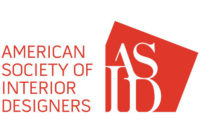The American Society of Interior Designers (ASID) has released the fourth quarter Interior Design Billings Index (IDBI).
Overall, business conditions in 2015 were healthy and supportive of the design industry, building on momentum from the previous year. The average IDBI score of 57.2 was identical to its 2014 figure. ASID indices are centered on a score of 50; above 50 indicates expansion and below 50 indicates contraction. In addition, project inquiries scores continue to remain high, with an average of 60.7, slightly below 62.7 posted in 2014. Key drivers to the continued growth across the interior design industry included renewed growth in housing and construction activity.
“All indicators signal that the demand for design industry services should maintain momentum into 2016 as economic and labor markets continue to advance,” said Jack Kleinhenz, ASID economist. “I’m not overly concerned about the recent contractionary readings, as their overall trend remains in expansionary territory. Nevertheless, construction spending will continue to show fits and starts, and some backpedaling is probable to show up in the cards.”
Design firms experienced a modest downturn in December across all sizes of firms compared to September. December IDBI billings show contraction across all sizes of firms since September, with the exception of firms employing 10 to 24 people (IDBI score of 60). During 2015, both sole proprietors and firms employing two to nine people experienced mild volatility in demand but were in expansionary territory. New positive indicators for January suggest that December’s soft demand is temporary.
All regions indicated business conditions had weakened at the close of the year. The South and Midwest regions reported IDBI scores of 41 and 47, a decline in month-over-month billings. Both regions spent the past 12 months with positive IDBI scores above 50. The Northeast, after enjoying strong second and third quarters, stayed above an IDBI of 50 until December, when it dipped to 46. The West ended the year with a fourth quarter average of 45, down from its third quarter IDBI average of 52.
Total construction spending for November was .4% lower than October, but 10.5% higher than in November 2014. Private construction, both residential and commercial, was the driver of 2015 growth. Spending on private residential structures, particularly excluding home improvement, was a consistent performer, where single-family and multi-family spending have been upbeat.
Looking forward, the design industry remains positive about its near-term outlook. The December six-month business conditions index score of 68 is a slight uptick from the September score of 66, indicating expected increases in billing. The consistency of these scores suggests continued expansion for the design industry.
For more information, visit asid.org.




